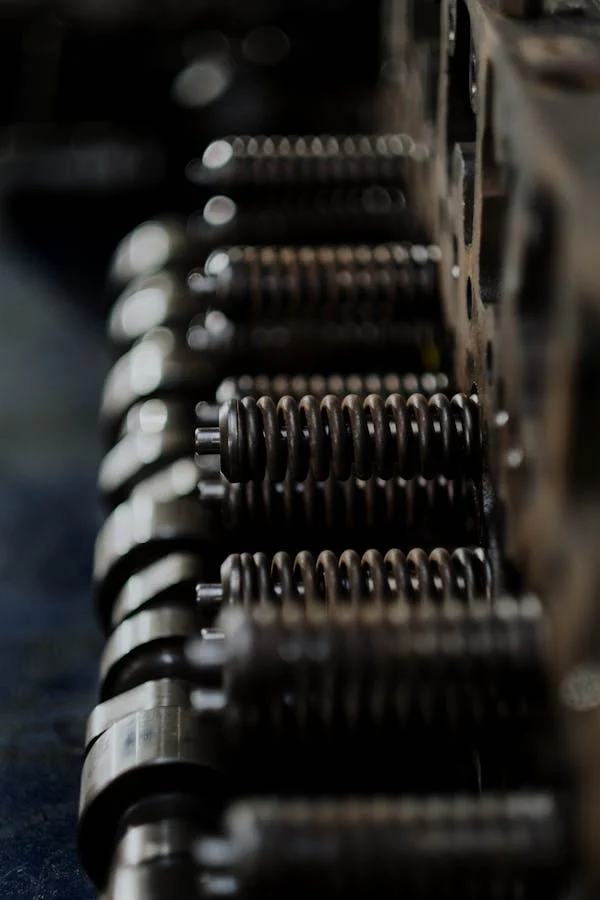In the world of automotive engineering, suspension systems play a vital role in how a vehicle handles different terrains, absorbs shock, and ensures passenger comfort. One of the oldest and most durable types is the rigid axle suspension system. Though less common in modern passenger cars, this system continues to be widely used in heavy-duty vehicles, trucks, and off-roaders for its strength and simplicity. Let’s explore what makes the rigid axle suspension system unique, its working mechanism, advantages, disadvantages, and where it is most effectively used.
What is a Rigid Axle Suspension System?
Also known as a solid axle or live axle, a rigid axle suspension system connects the wheels on either side of the vehicle using a single solid beam or shaft. This means that any vertical movement in one wheel affects the other wheel as well, as both are tied together mechanically.
This system can be found at the front, rear, or both ends of the vehicle, depending on the design. In modern usage, it’s most commonly applied at the rear axle, especially in trucks, SUVs, and commercial vehicles.
How It Works
In a rigid axle setup, the axle housing contains the differential and connects to the wheels. Leaf springs, coil springs, or torsion bars are usually mounted to the axle to provide cushioning and support. The rigid axle itself is mounted to the chassis using control arms or trailing arms.
As the wheels move up and down over uneven surfaces, the rigid axle ensures that both wheels move in unison. This makes the suspension extremely durable and able to handle high loads and rough terrain.
Types of Rigid Axle Suspension Systems
There are two major categories:
- Driven Rigid Axle:
- The axle not only supports the vehicle’s weight but also transmits torque to the wheels.
- Commonly found in rear-wheel-drive trucks and 4×4 vehicles.
- Dead Rigid Axle:
- This axle does not transmit any power but serves only as a support structure.
- Usually seen on the front of older trucks or in trailers.
Advantages of Rigid Axle Suspension Systems
Despite being an older technology, the rigid axle suspension system remains relevant due to several key advantages:
1. Durability
- With fewer moving parts and a solid design, rigid axles are known for their long lifespan.
- Ideal for vehicles exposed to harsh driving conditions.
2. Load Bearing Capacity
- This system handles heavy loads better than independent suspension systems.
- It’s commonly used in cargo trucks, pickup trucks, and off-road vehicles.
3. Simple Maintenance
- Easier and less costly to maintain compared to complex independent systems.
- Repairs are often straightforward due to the minimal mechanical complexity.
4. Off-Road Capability
- Solid axles offer better articulation and ground clearance, making them preferred in off-roaders like Jeep Wrangler, Toyota Land Cruiser, and Land Rover Defender.
Disadvantages of Rigid Axle Suspension Systems
While the rigid axle offers strength and simplicity, it also comes with certain limitations:
1. Poor Ride Comfort
- Since both wheels are mechanically linked, bumps on one side affect the other, resulting in a less smooth ride.
- This makes it less suitable for luxury or passenger cars.
2. Handling Limitations
- Rigid axles offer less precise handling, especially at high speeds or during cornering.
- This is why most modern sedans and sports cars use independent suspension systems.
3. Increased Unsprung Weight
- The axle and differential move with the wheels, increasing unsprung mass, which can reduce overall ride quality and responsiveness.
Where Rigid Axle Suspension is Still Used
The rigid axle suspension system remains widely used in:
- Commercial Trucks: For hauling heavy loads across long distances.
- SUVs and Off-Roaders: For rugged terrains and durability.
- Utility Vehicles: Such as tractors and construction vehicles.
- Older Model Cars: Classic cars and early automotive designs relied heavily on rigid axles.
Rigid Axle vs Independent Suspension
| Feature | Rigid Axle Suspension | Independent Suspension |
|---|---|---|
| Ride Comfort | Less comfortable | More refined and smooth |
| Durability | High durability | Moderate, depending on use |
| Load Capacity | Excellent | Moderate |
| Off-Road Performance | Strong articulation | Limited articulation |
| Maintenance | Easier and cheaper | More complex and costly |
Technological Enhancements
While the basic design of the rigid axle remains unchanged, modern vehicles have enhanced this system with:
- Air Suspension: To adjust ride height and improve comfort.
- Electronic Stability Control: To compensate for handling limitations.
- Advanced Shock Absorbers: To better absorb bumps and reduce vibrations.
Conclusion
The rigid axle suspension system is a testament to mechanical simplicity and rugged strength. While it may not offer the plush comfort or nimble handling of modern independent systems, its durability, load-bearing capacity, and off-road potential keep it in demand.
Whether you’re driving a heavy-duty truck, navigating rocky trails, or transporting goods, a vehicle with a rigid axle suspension system could be your best companion on the road. Understanding its benefits and limitations will help you make the right choice based on your driving needs.






